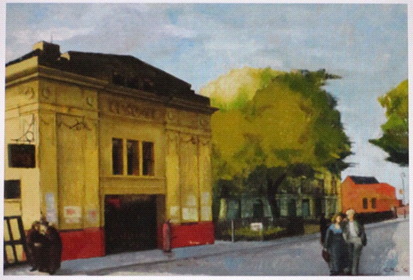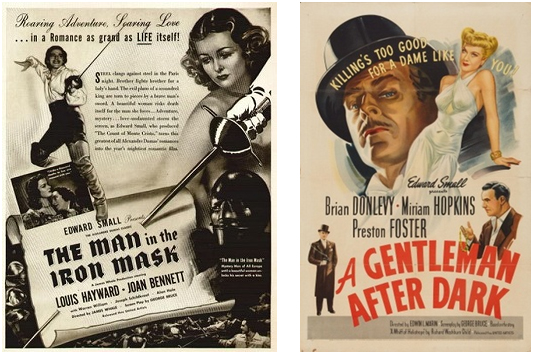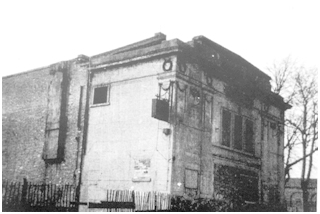
December 1913, and on the other side of the world, local lad Charlie Chaplin is about to join Keystone Studios. Meanwhile closer to home here on Wells Street, Camberwell Central Cinema opens its doors. The proprietor lived and worked just up the road. Critics congratulated him on the cinema’s fine choice of location (facing St. George’s church), and extensive use of steel and concrete, to resist fire. It meant the front looked a little bulky – but it had a temple-like grandeur, even if it wasn’t the most elegant. Tickets were threepence (about equivalent to £1 today), fourpence, or sixpence – for the ‘Grand Circle’. Children’s matinees were just a penny – the same as a 2nd class cold bath over at the bath-house across the road. Which would you choose?

In the twenties, one of those children was Patricia Sibly – then living opposite the cinema, she was a very regular visitor. She would later shoot to fame as Anne Shelton (1923-1994) wartime sweetheart, swing-era singer, and movie star.
But first came the talkies, and the boom years for cinema-going. Owners John and Frank English ran the Coronet up until the mid 1930s : “We used to go to local factories to film the people coming out to lunch, and run the pictures in the Coronet Gazette, which we edited ourselves.” The cinema generally showed second-run or lesser known films. It had only 650 seats (“plush crimson tip-ups”), and didn’t open in the afternoons at all.
Bomb damaged in the Blitz, October 1945 saw the “Grand Reopening by His Worship the Mayor of Camberwell”. Note that His. A couple of months later, and it would have been our very own Jessie Burgess – she was just about to become Camberwell’s first female Mayor. The opening bill was The Man in the Iron Mask (1939) and A Gentleman after Dark (1942). Neither film exactly the hottest new release!

In 1948 the last reel rolled at the Coronet. The Pathé projectors were moth-balled, the foyer lights dimmed, and the place was boarded up for good.And so it remained – slipping into ever-worse dereliction through the fifties. In 1951, a South London Press headline ran: “PLAYGROUNDS IGNORED, CHILDREN BACK IN BLITZ RUINS – Angry residents call in police” – “children break into the bombed and shuttered Coronet cinema, climb up and down the darkened interior, and crawl along the roof and parapets, 60 feet above the pavements”. Then came the final blow, in 1957: “Scenery from West End shows was destroyed at the old Coronet Cinema, now a warehouse … A fire started in the roof and burning fragments fell on the scenery … Ten fire engines managed to prevent the fire gutting the whole building … The scenery included “Treasure Island” backcloths such as rockeries and woodland scenes …” (South London Press). The local cinema once so praised for its fire-proof design had finally succumbed to neglect.

The disaster was absolute. 1958, South London Press again: “DANGER CINEMA TO BE PULLED DOWN BY L.C.C.”, “until it has been swept away locals will not be satisfied”, “…a source of annoyance to the local people for a long time. Fires constantly broke out, either in the cinema or [at one time adjoining] houses, because they were used by children as playgrounds. Tramps used the building as temporary lodgings, and once children found the body of a tramp there. L.C.C. pulled down the old houses but the Coronet was left standing. In the last few months there have been many fires in the cinema”.
After 45 years of silver-screen magic, spanning two world wars, it was finally curtains for the Coronet. Demolition started two weeks later. Today, new flower beds mark the spot where the young Anne Shelton once dreamt of movie stardom.
Hi I was one of those horrible children who played quite regularly in the Coronet, along with many other bombed sites, back of Burgess Rd, including the canal (catching sticklebacks) Westmoreland rd/Thurlow St Before the flats were built.
Would I have changed my childhood – NO! I have so many memories of living in south London mt pie and mash plus many more , now in my late seventies and living in beautiful countryside. Thank for bringing it all back. Tony
Hi I broke my left arm trying climb up a rope which snapped just as I got to the top. Fell and landed on a piano
My mother and father met in the Coronet in 1934 when my Dad stood in as an usher for the evening when his friend was ill, so that his pal wouldn’t lose his job. Dad worked at Samuel Jones, engineering. That evening my mum went with her sister, and so but for the Coronet I probably wouldn’t be here. I lived in East Surrey Grove until 1964 when we were rehoused and the place was demolished. I now live in Epsom, which is lovely but still remember my childhood which was very happy in and around Peckham after WW2.
I was born in 1941 and lived at 87 Havil Street and went to Oliver Goldsmith School. My grandparents used to take me to the Coronet once a week until it closed! I used to haunt the library across the road. Many years after all that I had a removal business and actually moved Jessie Burgess to her retirement flat near Camberwell Town Hall. Dad was an RAF flyer and my mother ran the box office at the Camberwell Palace until it closed in 1955. Great memories playing in the bombed bit of St Giles Hospital and climbing into the damaged clocktower over the nurses quarters. You could see Tower Bridge from there. What a strange dystopian world we now live in!
Hi Thomas, found your piece on Camberwell most interesting. I lived in Wells Way opposite The Coronet cinema during forties and fifties. Worked at Samual Jones. My mum played the piano over the ‘grounds ‘(next to picture house on V.E Day party. Very happy times.
The loss of so many places of entertainment in south London is a tragedy. Sometimes the removal of unsafe structures was necessary but a lot of the time it was down to corporate greed. I lived on Denmark Hill and was an habitue of Camberwell Palace theatre, [gone] The Golden Domes cinema, [gone] The Grand cinema [now a snooker hall (2020 – now gone-Ed)], The Brixton Empire theatre, [gone] the Brixton Empress, [gone] the New Cross Empire theatre, [gone] the Regal cinema [now a place of worship] Camberwell and the Odeon Denmark Hill, [gone]. Each generation has its tale of woe. This is mine.
Hi, Don. I totally agree about all those cinemas along Camberwell Green, and oh, that lovely theatre the Camberwell Palace. Apart from the cinemas, as a young girl, I often joined the queue outside the theatre, and sitting spellbound in the circle, I’d watch some really good productions, including my all time favourites, suspense.
I often went on my own, but walking home to Wells Way, was quite safe back then. When everything was either pulled down, or turned into a shop of some kind, it was a very sad day.
Regards, Sheila